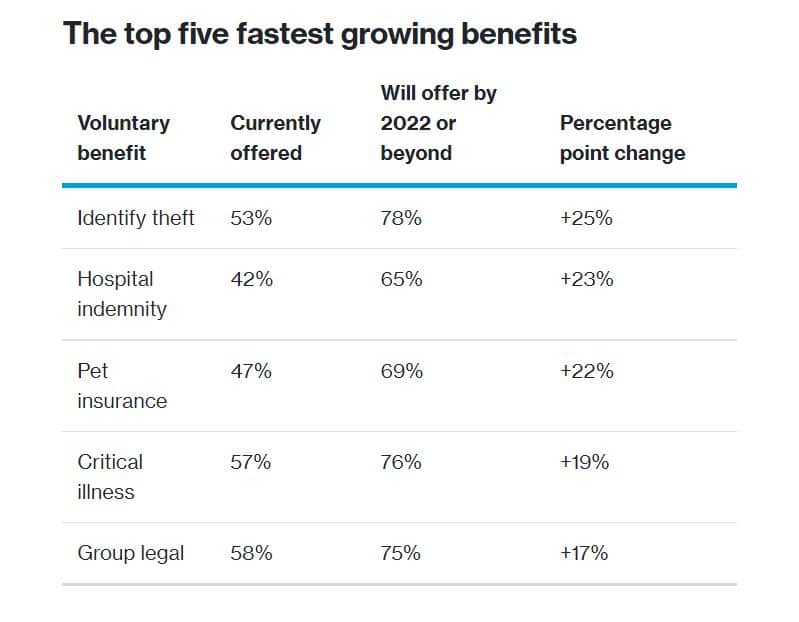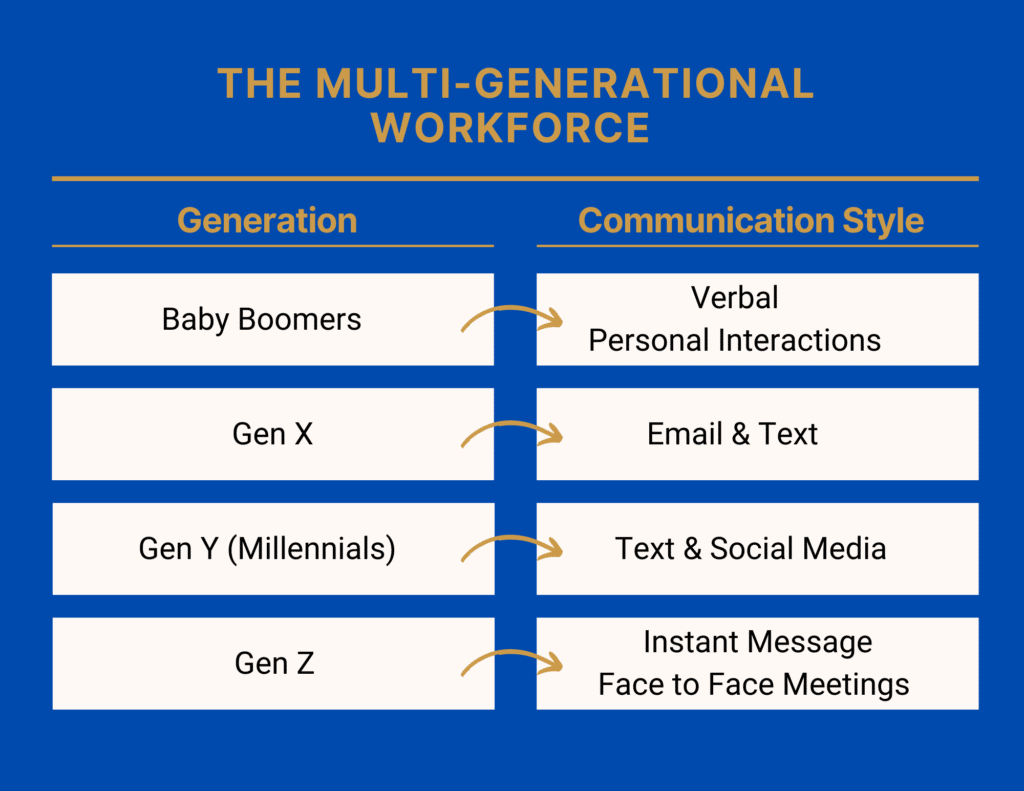Is your organization ready for the post-pandemic paradigm shift that is shaping 2022’s workforce trends?
As Heraclitus once said, “The only constant in life is change.” And more change is exactly what’s in store for 2022 as shockwaves from the global pandemic continue to reverberate throughout the workforce.
After two years of contending with COVID-19, employees’ values have fundamentally shifted. Many are rethinking how they work, why they work and what they want out of work, hence a new workplace paradigm is taking shape.
For organizations to remain competitive in today’s shifting labor market, leaders will have to reimagine the stale, pre-pandemic workplace archetype. To help, here are the top five workforce trends that will define 2022.
1. The Great Resignation Continues
The most significant sign of peoples’ changing perspective on work is “The Great Resignation,” a trend that is forecasted to continue throughout 2022.
According to LinkedIn’s data, there’s been a 54% increase in job transitions this year, and the movement skews young.
Job Transition by Generation
- Gen Z job moves are up 80%
- Millennials are transitioning at the second-highest rate, up by 50%
- Gen X is following at 31%
- While Boomers are up by just 5% from 2020.
Globally, employees are prioritizing their wellbeing and work-life balance over productivity and profit margins. They’re demanding higher pay, better benefits, and more support from employers.
“We are experiencing right now globally one of the biggest changes to ever play out in the world of work.”
In addition, younger employees, like Gen Z and Millennials, are seeking companies with soul and job positions with purpose.
LinkedIn’s CEO, Ryan Roslansky, told Time Magazine, “We are experiencing right now globally one of the biggest changes to ever play out in the world of work.” In his opinion, The Great Resignation is another sign of the “reordering of the employee-employer relationship.”
Unfortunately for leaders, high turnover will likely continue throughout 2022 and into 2023, as organizations continue to contend with a slow economic recovery and as the generations most likely to turnover become a larger share of the workforce.
2. Remote Work is Here to Stay
The Great Resignation isn’t the only workplace trend that’s a direct result of COVID-19. It looks like hybrid work is here to stay too.
Employees are overwhelmingly in favor of maintaining WFH (work from home), at least part-time. According to Gallup’s latest poll:
- 54% of employees want a hybrid arrangement.
- 37% of employees want to work from home exclusively.
- 9% of employees want to return to the office full time.
Gallup’s poll also revealed that despite the vaccine rollout, 67% of white-collar employees are still working from home either exclusively (41%) or part-time (26%).
This summer’s short reprieve from COVID-19 had 70% of companies planning to bring employees back to the office by now (this fall), but the delta surge squashed those plans.
For example, Google and Apple postponed office re-openings, Wells-Fargo is delaying their return to January 2022, and Lyft pushed its return date to February 2023.
And even those organizations’ plans are tenuous because as far back as March of this year, reports were coming out claiming that upwards of 60% of employees would resign if they were forced to return to the office.
Shortly thereafter, The Great Resignation began, and now WFH or a hybrid working model is quickly becoming the price of admission to access today’s top talent.
3. The Multi-Generational Workplace
Adding to the complexity of remote work, today’s workforce is the first to include four generations, from Gen Z to the Baby Boomers.
Each of these generations comes with different perspectives, expectations, and communication styles. The challenge for leadership is harnessing the power of these collective differences to fuel growth.
But how do leaders go about accomplishing this?
According to the experts, it all starts with listening and understanding. As pedestrian as that may sound, research reveals that communication breakdowns are the most significant barriers to successfully integrating a multi-generational workforce.
A 2017 study from Robert Half Management Resources revealed that communication is the most difficult aspect of managing talent from different generations.
In the recruiting company’s executive survey, 30% of respondents said communication skills represent the most significant generational difference among employees.
For leaders, the first step to overcoming this challenge is identifying each generation’s best communication practices and preferred communication channels.
4. Upskilling is Taking the Front Row
One benefit that has cross-generation appeal is upskilling. It’s so popular that even Forbes is asking if the future workplace is more like school.
A global talent shortage, the digital transformation of the workplace, and the rising cost of education have created an ever-growing skills gap.
In fact, a recent Gartner survey found that 58% of the workforce needs new skills to do their current job.
Add to these factors pandemic-related job losses plus more time at home and people of all ages were upskilling to be more relevant to the corporate world. Older employees were closing the tech gap and younger employees were focusing on skillsets that would propel their careers.
Companies are also facing a learning curve:
- Organizations are still adapting their human capital strategies to meet the moment.
- Managers are still learning how to lead virtual teams.
- Human resource departments are trying to figure out how to onboard a remote workforce.
- The C-suite is trying to maintain cohesion amongst a scattered workforce.
- The tech sector is working double-time to keep pace with the workforce’s digital revolution.
As it seems now, just about everyone is taking a ride on the upskilling train. And as expected, companies with the most capital are taking the upskilling trend and running with it.
Employer Upskilling Initiatives
- Mastercard partnered with upskilling platform Degreed, which uses AI technology to build up its employee tech skills as the finance company accelerates its digital technology offerings.
- PwC announced they’d invested $3 billion in creating an upskilling initiative over the next three to four years.
- Amazon launched Technical Academy, which provides both training and job placement opportunities for employees who want to progress in software engineering.
In the face of The Great Resignation, one of the best things organizations can do is invest in employee upskilling. In fact, LinkedIn’s Workforce Learning Report revealed that 94% of employees said they would stay at a company longer if it invested in training them.
5. Voluntary Benefits Get Competitive
The pandemic also created renewed demand for voluntary benefits, and as COVID-19 continues to subside, that demand is expected to grow.
Initially, voluntary benefits rose in popularity because employees needed extra help as the virus hobbled schools and child care centers, separated families, and blurred the line between work and home.
Many employers responded with a slew of voluntary offerings; from child care and student loan assistance to financial counseling.
However, as the labor market began to heat up voluntary benefits evolved into a must-have. In fact, Willis Towers Watson reported that 94% of large employers believe that voluntary benefits will be more important to their total rewards strategy going forward. That’s up 58% from 2018.

Willis Towers Watson
https://www.willistowerswatson.com/en-US/News/2021/05/pandemic-accelerates-employer-voluntary-benefit-offerings-wtw-survey-finds
Employees want voluntary benefits that improve their lives. As a result, employers are seeing more demand for perks that increase work-life balance and wellness. Employees also want benefits that give them more personal time.
Most popular services and perks that employers currently offer or are planning to offer over the next two years:
- Financial planning/counseling through an existing vendor (93%)
- Tuition reimbursement programs (88%)
- Telephonic financial planning/counseling (77%)
- Onsite fitness center (54%)
- Backup child care (48%)
- Elder care (44%)
As The Great Resignation continues, employers with robust voluntary benefit offerings are positioning themselves to be the recruiting leaders of the future.
COVID-19 isn’t over yet, but the post-pandemic workplace paradigm shift has already begun, and it’s going to drive 2022’s biggest workforce trends. The future of work is about creating a sustainable, employee-centric workplace that strikes a balance between business objectives and employee wellbeing.
Are you looking for an innovative yet cost-effective work-life balance benefit?
Consider giving your employees the gift of more time with office concierge and errand running services. On average, each of our customers saves 1.2 hours per service. Learn more about BEST’s employee concierge service.





